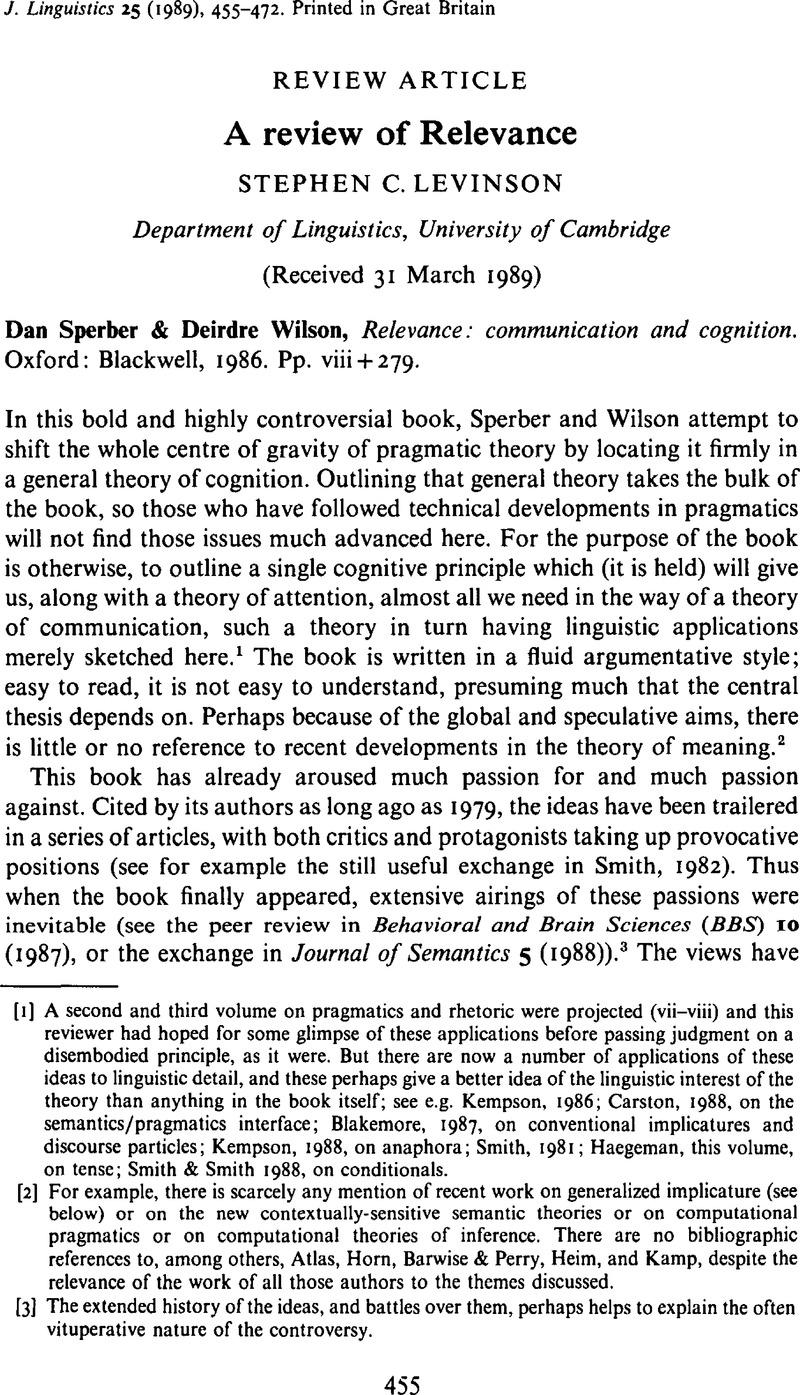Crossref Citations
This article has been cited by the following publications. This list is generated based on data provided by Crossref.
Huang, Yan
1991.
A neo-Gricean pragmatic theory of anaphora.
Journal of Linguistics,
Vol. 27,
Issue. 2,
p.
301.
Contini-Morava, Ellen
1991.
Deictic explicitness and event continuity in Swahili discourse.
Lingua,
Vol. 83,
Issue. 4,
p.
277.
Levinson, Stephen C.
1991.
Pragmatic reduction of the Binding Conditions revisited.
Journal of Linguistics,
Vol. 27,
Issue. 1,
p.
107.
Hawkins, John A.
1991.
On (in)definite articles: implicatures and (un)grammaticality prediction.
Journal of Linguistics,
Vol. 27,
Issue. 2,
p.
405.
SINCLAIR, MELINDA
1993.
Are academic texts really decontextualized and fully explicit? A pragmatic perspective on the role of context in written communication.
Text - Interdisciplinary Journal for the Study of Discourse,
Vol. 13,
Issue. 4,
Jucker, Andreas H.
1993.
Relevance relations in discourse. A study with special reference to Sissala.
Journal of Pragmatics,
Vol. 20,
Issue. 3,
p.
296.
Carston, Robyn
1995.
Quantity maxims and generalised implicature.
Lingua,
Vol. 96,
Issue. 4,
p.
213.
Turner, Ken
1995.
The principal principles of pragmatic inference: co-operation.
Language Teaching,
Vol. 28,
Issue. 2,
p.
67.
de Linde, Zoe
1995.
‘Read my lips’ subtitling principles, practices, and problems.
Perspectives,
Vol. 3,
Issue. 1,
p.
9.
1996.
Total Speech.
p.
271.
1996.
Total Speech.
p.
181.
1996.
Total Speech.
p.
226.
1996.
Total Speech.
p.
56.
Siegal, Michael
1996.
Perceptual and Cognitive Development.
p.
243.
1996.
Total Speech.
p.
98.
1996.
Total Speech.
p.
1.
1996.
Total Speech.
p.
323.
1996.
Total Speech.
p.
140.
1996.
Total Speech.
p.
24.
Green, Keith
1997.
Butterflies, wheels and the search for literary relevance.
Language and Literature: International Journal of Stylistics,
Vol. 6,
Issue. 2,
p.
133.





